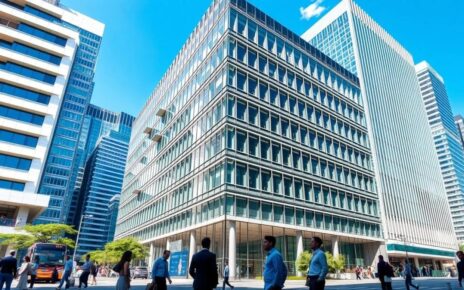Introduction
In the contemporary business landscape, the concept of sustainability has transcended buzzword status to become a defining factor in corporate responsibility. Facilities management services, as stewards of the physical work environment, play a pivotal role in driving this sustainability agenda. This article delves into the concept of Sustainable Synergy, exploring ten green initiatives that facilities management companies can adopt to transform their operations and contribute meaningfully to environmental preservation.
1. Visionary Leadership: Charting the Course for Sustainability
The journey towards sustainability begins with visionary leadership. This section explores how facilities management companies can champion green initiatives by fostering a culture of environmental stewardship among their leadership teams. Clear vision and commitment from the top set the tone for the entire organization’s sustainability journey.
2. Carbon Footprint Reduction: Strategies for Cleaner Operations
Reducing the carbon footprint is a central pillar of sustainable practices. Facilities management companies can implement strategies such as energy-efficient technologies, renewable energy adoption, and transportation optimization to minimize carbon emissions. This section outlines actionable steps to achieve a measurable reduction in environmental impact.
3. Circular Economy Integration: Closing the Resource Loop
Embracing a circular economy model involves minimizing waste and maximizing resource efficiency. This section discusses how facilities management companies can transition towards circularity by promoting practices such as reusing materials, refurbishing assets, and designing for longevity, thereby contributing to a more sustainable and responsible consumption pattern.
4. Nature-Inspired Design: Biophilic Elements in Facilities
Integrating elements inspired by nature into facility design, known as biophilic design, has proven benefits for both the environment and occupant well-being. This section explores how facilities management companies can incorporate green spaces, natural light, and sustainable materials to create work environments that mimic nature, fostering a healthier and more productive atmosphere.
5. Energy Harvesting: Tapping into Sustainable Power Sources
Facilities management can harness energy from natural sources through technologies like solar panels, wind turbines, and kinetic energy systems. This section discusses how energy harvesting initiatives can contribute to sustainable operations, reduce reliance on traditional power sources, and position facilities as self-sufficient contributors to green energy.
6. Responsible Water Management: Navigating the Aquatic Challenge
Water scarcity is a pressing global concern, making responsible water management a key green initiative. Facilities management can adopt strategies such as rainwater harvesting, greywater reuse, and smart irrigation systems to minimize water consumption. This section explores how these initiatives contribute to sustainable water practices.
7. Smart Waste Management: From Disposal to Resource Recovery
Waste management evolves beyond disposal when viewed through a sustainability lens. Facilities management companies can implement smart waste management systems that prioritize recycling, composting, and waste-to-energy technologies. This section outlines strategies for turning waste into a valuable resource and reducing the environmental impact of landfills.
8. Employee Wellness: Integrating Green Spaces for Human Flourishing
Green initiatives extend beyond environmental impact to positively influence employee wellness. This section explores how facilities management companies can incorporate green spaces, recreational areas, and wellness programs into workplaces, contributing to a holistic approach where both the workforce and the environment thrive.
9. Sustainable Sourcing: Ethical Procurement Practices
Sustainable sourcing is a cornerstone of green initiatives. Facilities management companies can choose suppliers with strong environmental and ethical credentials, opt for products with minimal packaging, and prioritize those made from recycled or renewable materials. This section delves into the importance of ethical procurement in achieving comprehensive sustainability goals.
10. Collaborative Ecosystems: Partnerships for Greater Impact
Achieving Sustainable Synergy requires collaboration not only within the organization but also with external partners. This section discusses how facilities management companies can forge partnerships with sustainability-focused organizations, share best practices, and contribute to a larger ecosystem working towards a common goal of environmental preservation.
Conclusion
As facilities management companies embark on the journey of Sustainable Synergy, they become catalysts for positive change. The adoption of green initiatives not only reduces environmental impact but also enhances operational efficiency, employee well-being, and overall corporate responsibility. The transformation from conventional practices to Sustainable Synergy is an investment in a future where the built environment harmonizes with nature, creating a lasting legacy of responsible stewardship for generations to come.





